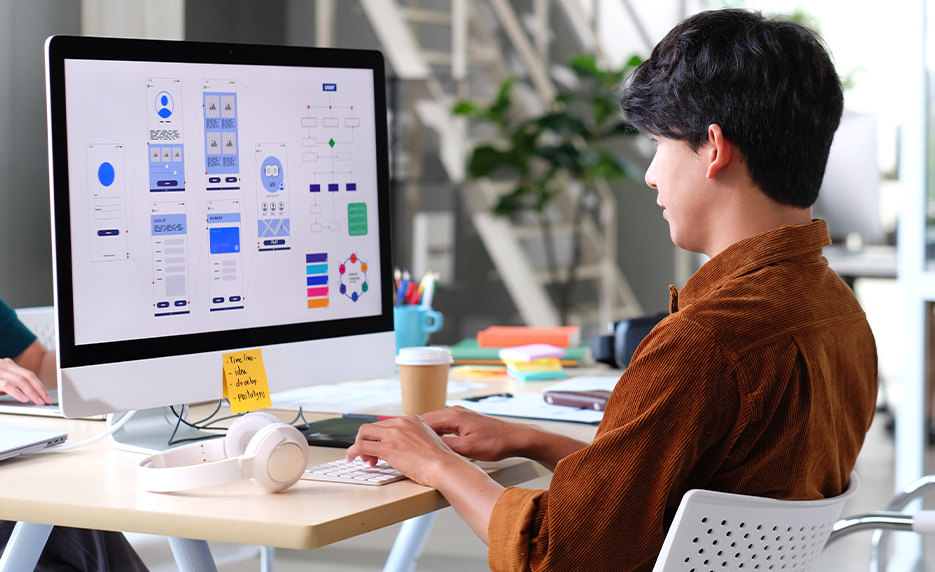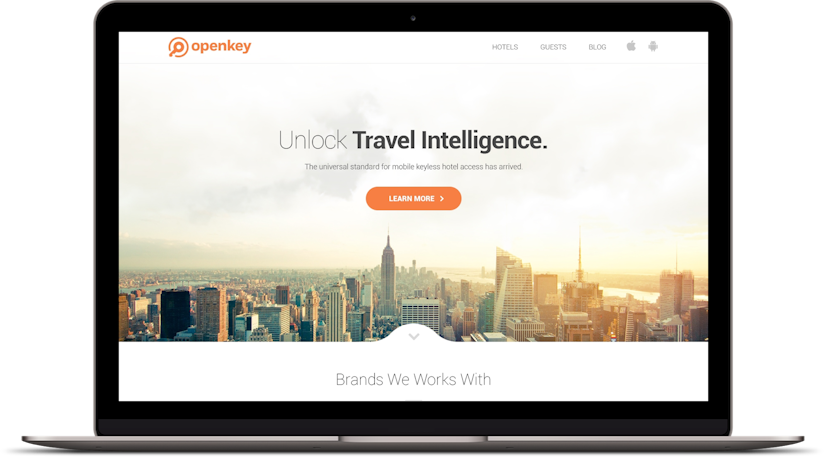All Categories
Featured
Table of Contents
- – What Does A Web Designer Do? - Careerexplorer ...
- – Website Design - Best Ecommerce Web Design By...
- – Design Principles - U.s. Web Design System (U...
- – 12 Essential Tips For Improving Your Web Desi...
- – Web Design Projects - Behance Tips and Tricks:
- – Chavez Web Design: Web Design San Diego - Bak...
- – Web Design Inspiration : The Best Website De...
- – What Can I Do With A Web Design And Developm...
- – Top 30 Web Design Companies - Apr 2022 - Des...
- – Siteinspire - Web Design Inspiration Tips an...
- – Why Good Web Design Is Important, And Why Yo...
What Does A Web Designer Do? - Careerexplorer Tips and Tricks:
Quick summary Usability and the energy, not the visual design, determine the success or failure of a site. Given that the visitor of the page is the only person who clicks the mouse and for that reason chooses everything, user-centric design has developed as a basic method for successful and profit-oriented website design - web design frederick md.
and the utility, not the visual design, determine the success or failure of a website. Because the visitor of the page is the only individual who clicks the mouse and for that reason chooses everything, user-centric design has become a standard technique for successful and profit-oriented web design. If users can't utilize a function, it might as well not exist.
g. where the search box ought to be put) as it has actually already been performed in a variety of articles; rather we concentrate on the approaches which, used effectively, can cause more advanced design choices and streamline the procedure of viewing presented information. Please discover that you might be thinking about the usability-related posts we've published before: Concepts Of Excellent Website Design And Reliable Web Design Guidelines, In order to utilize the concepts correctly we first need to understand how users engage with websites, how they believe and what are the fundamental patterns of users' behavior.
Website Design - Best Ecommerce Web Design By Shopify Tips and Tricks:
Visitors glance at each brand-new page, scan a few of the text, and click on the first link that captures their interest or vaguely looks like the thing they're searching for. In fact, there are large parts of the page they don't even look at. Most users browse for something intriguing (or helpful) and clickable; as quickly as some promising candidates are discovered, users click.
If a page provides users with premium material, they want to jeopardize the content with advertisements and the style of the website. This is the factor why not-that-well-designed sites with high-quality material acquire a great deal of traffic over years. Material is more crucial than the style which supports it.

Users don't check out, they scan. Notice how "hot" locations abrupt in the middle of sentences. This is typical for the scanning procedure. Extremely easy concept: If a site isn't able to meet users' expectations, then designer stopped working to get his job done appropriately and the company loses money. The higher is the cognitive load and the less user-friendly is the navigation, the more prepared are users to leave the site and look for alternatives.
Design Principles - U.s. Web Design System (Uswds) Tips and Tricks:
Neither do they scan website in a direct fashion, going sequentially from one website area to another one. Rather users satisfice; they select the very first sensible choice. As quickly as they discover a link that appears like it may cause the objective, there is an extremely good possibility that it will be immediately clicked.
It does not matter to us if we understand how things work, as long as we can use them. If your audience is going to imitate you're developing signboard, then design terrific signboards." Users desire to have the ability to manage their internet browser and depend on the consistent information discussion throughout the site.
If the navigation and website architecture aren't user-friendly, the variety of enigma grows and makes it harder for users to understand how the system works and how to get from point A to point B. A clear structure, moderate visual hints and quickly recognizable links can help users to discover their course to their aim.
12 Essential Tips For Improving Your Web Design In 2022 Tips and Tricks:

claims to be "beyond channels, beyond products, beyond circulation". What does it suggest? Given that users tend to explore websites according to the "F"-pattern, these three statements would be the first elements users will see on the page once it is filled. The style itself is easy and instinctive, to comprehend what the page is about the user requires to search for the response.
As soon as you've attained this, you can communicate why the system works and how users can gain from it. Individuals will not use your website if they can't discover their method around it. 2. Don't Misuse Users' Persistence, In every project when you are going to offer your visitors some service or tool, try to keep your user requirements minimal.
First-time visitors are willing to, not filling long web kinds for an account they may never use in the future. Let users check out the website and find your services without forcing them into sharing personal data. It's not reasonable to require users to go into an e-mail address to test the function.
Web Design Projects - Behance Tips and Tricks:
And that's what you want your users to feel on your web website. The registration can be done in less than 30 seconds as the type has horizontal orientation, the user does not even need to scroll the page.
A user registration alone suffices of an impediment to user navigation to reduce inbound traffic. 3. Manage To Focus Users' Attention, As websites offer both fixed and vibrant content, some elements of the user interface bring in attention more than others do. Obviously, images are more captivating than the text simply as the sentences marked as strong are more appealing than plain text.
Focusing users' attention to particular locations of the site with a moderate usage of visual elements can help your visitors to receive from point A to point B without thinking about how it really is supposed to be done. The less enigma visitors have, the they have and the more trust they can establish towards the business the site represents.
Chavez Web Design: Web Design San Diego - Bakersfield ... Tips and Tricks:
4. Make Every Effort For Feature Exposure, Modern website design are generally slammed due to their technique of directing users with aesthetically appealing 1-2-3-done-steps, big buttons with visual effects and so on. From the design point of view these aspects in fact aren't a bad thing. On the contrary, such as they lead the visitors through the website material in an extremely easy and easy to use method.
The site has 9 main navigation options which are noticeable at the very first glimpse. What matters is that the content is well-understood and visitors feel comfortable with the way they communicate with the system.
Rather a cost: simply what visitors are looking for. An optimum service for effective writing is touse short and concise expressions (come to the point as rapidly as possible), usage scannable design (categorize the material, utilize numerous heading levels, utilize visual elements and bulleted lists which break the flow of uniform text blocks), usage plain and unbiased language (a promotion does not require to sound like advertisement; provide your users some affordable and unbiased reason why they should utilize your service or remain on your site)6.
Web Design Inspiration : The Best Website Design Ideas Tips and Tricks:
Users are seldom on a site to delight in the design; moreover, in many cases they are searching for the details despite the style - web design frederick md. Pursue simpleness rather of complexity. From the visitors' point of view, the best site style is a pure text, without any advertisements or further material blocks matching exactly the question visitors used or the material they have actually been looking for.
Finch plainly presents the info about the website and gives visitors an option of choices without overcrowding them with unnecessary content. Not only does it help to for the visitors, however it makes it possible to view the information provided on the screen.
Complex structures are harder to read, scan, analyze and work with. If you have the option between separating two style sectors by a noticeable line or by some whitespace, it's typically better to use the whitespace solution. (Simon's Law): the much better you handle to supply users with a sense of visual hierarchy, the easier your material will be to view.
What Can I Do With A Web Design And Development Degree? Tips and Tricks:
The exact same conventions and rules must be applied to all elements.: do the most with the least quantity of hints and visual elements. Clarity: all elements need to be developed so their significance is not ambiguous.
Conventions Are Our Buddies, Standard design of site aspects does not lead to an uninteresting web site. In truth, as they decrease the discovering curve, the need to determine how things work. For example, it would be an use nightmare if all websites had various visual discussion of RSS-feeds. That's not that different from our regular life where we tend to get used to standard concepts of how we organize data (folders) or do shopping (positioning of items).
understand what they're anticipating from a site navigation, text structure, search placement etc. A case in point from functionality sessions is to translate the page in Japanese (presuming your web users do not know Japanese, e. g. with Babelfish) and provide your usability testers with a task to discover something in the page of different language.
Top 30 Web Design Companies - Apr 2022 - Designrush Tips and Tricks:
Test Early, Test Often, This so-called TETO-principle needs to be applied to every web style project as use tests frequently supply into considerable issues and concerns related to a provided layout. Test not too late, not too little and not for the incorrect reasons.
Some crucial indicate keep in mind: according to Steve Krug, and screening one user early in the task is better than testing 50 near completion. Accoring to Boehm's first law, errors are most frequent during requirements and design activities and are the more pricey the later on they are gotten rid of.
That implies that you design something, test it, repair it and then evaluate it again. There may be issues which have not been discovered during the preliminary as users were virtually obstructed by other problems. functionality tests. Either you'll be pointed to the issues you have or you'll be indicated the lack of major design defects which is in both cases an useful insight for your task.
Siteinspire - Web Design Inspiration Tips and Tricks:

This holds for designers. After you've dealt with a website for few weeks, you can't observe it from a fresh point of view anymore. You understand how it is constructed and for that reason you know precisely how it works you have the knowledge independent testers and visitors of your site would not have.
It can be connected to other areas such as graphic design, user experience, and multimedia arts, however is more aptly seen from a technological perspective. It has actually become a big part of individuals's everyday lives. It is hard to envision the Web without animated graphics, various styles of typography, background, videos and music.

During 1991 to 1993 the Web was born. Text-only pages might be viewed using an easy line-mode web browser. In 1993 Marc Andreessen and Eric Bina, produced the Mosaic web browser. At the time there were numerous web browsers, however the bulk of them were Unix-based and naturally text heavy. There had actually been no integrated approach to graphic design components such as images or noises.
Why Good Web Design Is Important, And Why You Need It Tips and Tricks:
The W3C was produced in October 1994 to "lead the Internet to its full capacity by developing common procedures that promote its advancement and guarantee its interoperability." This discouraged any one company from monopolizing a propriety web browser and programming language, which could have modified the impact of the Internet as a whole.
As this has actually happened the technology of the web has actually also carried on. There have also been substantial modifications in the way individuals use and access the web, and this has altered how websites are designed. Because the end of the browsers wars [] brand-new internet browsers have been released. Many of these are open source suggesting that they tend to have quicker development and are more helpful of new requirements.
Learn more about Lovell Media Group LLC or TrainACETable of Contents
- – What Does A Web Designer Do? - Careerexplorer ...
- – Website Design - Best Ecommerce Web Design By...
- – Design Principles - U.s. Web Design System (U...
- – 12 Essential Tips For Improving Your Web Desi...
- – Web Design Projects - Behance Tips and Tricks:
- – Chavez Web Design: Web Design San Diego - Bak...
- – Web Design Inspiration : The Best Website De...
- – What Can I Do With A Web Design And Developm...
- – Top 30 Web Design Companies - Apr 2022 - Des...
- – Siteinspire - Web Design Inspiration Tips an...
- – Why Good Web Design Is Important, And Why Yo...
Latest Posts
Custom Web Design, Development & Digital Marketing ... Tips and Tricks:
Custom Website Design And Marketing - Inmotion Hosting Tips and Tricks:
Awwwards - Website Awards - Best Web Design Trends Tips and Tricks:
More
Latest Posts
Custom Web Design, Development & Digital Marketing ... Tips and Tricks:
Custom Website Design And Marketing - Inmotion Hosting Tips and Tricks:
Awwwards - Website Awards - Best Web Design Trends Tips and Tricks: